Of all the social media sites in all the land, Facebook is the king. Last quarter, it had an average of 2.2 billion monthly active users. That is such a phenomenally high number that there is no comparison I can make that will drive it home. Facebook has connected the world in an unprecedented way, opening up a wealth of previously unimaginable opportunities to business owners.
Need help on your board game?
Looking for more resources to help you on your board game design journey?
It’s funny that I’ve just effusively praised Facebook. I’ve only started really paying attention to it in the last year, particularly when I started working on Highways & Byways. In this past year, I’ve been using Facebook’s advertising system to increase the visibility of blog posts and to drive people to the Highways & Byways Kickstarter mailer. A few hundred dollars in advertising money have gone a really long way toward increasing the visibility of my projects. We’ll get to that in more detail below 🙂
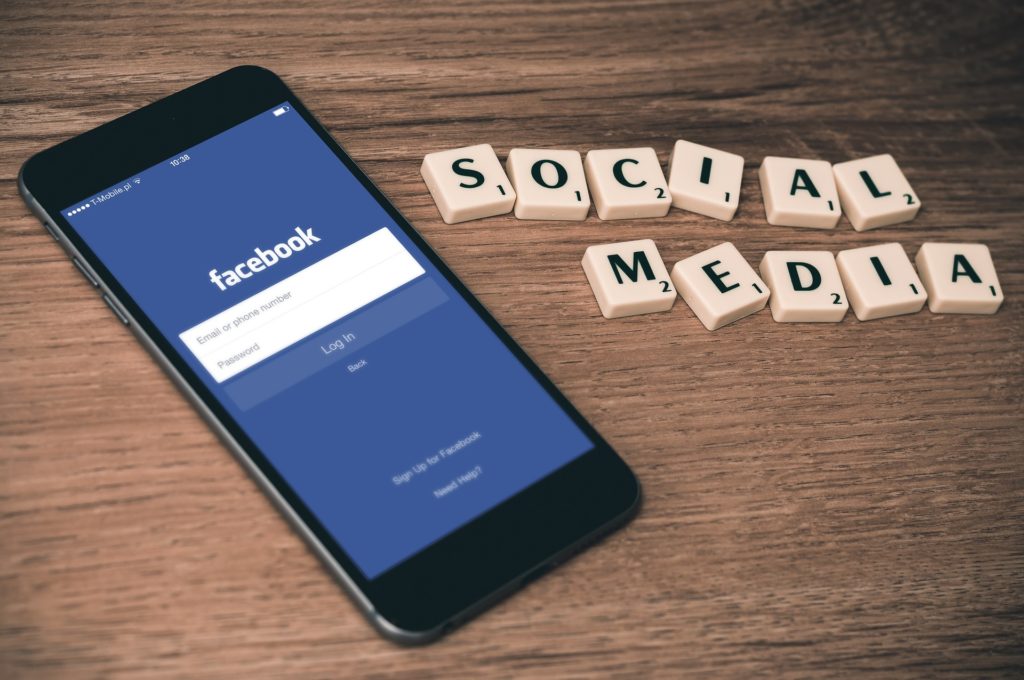
Much like my old staple How to Get Big on Twitter as a Board Game Dev, I’ll be covering everything you need to know to get started on Facebook as a board game developer. There is quite a bit that goes into it, so I’ve broken this guide into five parts:
- What is Facebook Good For?
- Getting Started
- Getting Noticed
- Refining Your Approach
- Using Facebook for More than Just Posting
What is Facebook Good For?
Reasons to Use Facebook
Facebook is the biggest social media site in the world. In fact, at the moment I’m writing this article, it’s the third most popular website in the world, bested only by Google and YouTube. You can find the majority of people in North America on Facebook, making it the world’s de facto online water cooler. Basically, it’s the world’s biggest hangout spot.
Because Facebook has such a variety of people, this has opened up some incredible opportunities, which Facebook leadership has wisely taken advantage of. People on Facebook share lots of information about themselves – their age, location, interests, and so on. This is incredibly valuable information for marketers. That makes Facebook the best way I know of to target very, very, very specific niche audiences.
That leads neatly into Facebook’s main attraction for marketers: it has the best advertising system ever made. I know that’s a huge statement, but hear me out. Facebook reaches more people than any other entity in this world aside from Google. (Remember, YouTube – the #2 ranking site – is a part of Google.) People willingly share extraordinary and unprecedented amounts of information about themselves on Facebook voluntarily. For better or worse, it is a common behavior to compile a complete dossier of yourself online which is then accessible to marketers, which includes you as a burgeoning game developer.
The Big Reason not to Use Facebook
Facebook has one drawback and it’s a real doozy. The business model that Facebook uses is effective to a fault. They have practically eliminated the organic reach of Facebook pages. Facebook is basically pay-to-play if you’re not grandfathered in. It’s been that way for years, including after I started myself.
Facebook is worth paying for. From what I’ve seen, it gets a strong return on investment that Twitter and Snapchat can’t touch. It’s faster and more efficient than other methods I use such as Twitter direct message campaigns. The only problem is that making board games is already expensive, and the idea of paying a super-rich company to show your game to people is pretty odious.
New game devs: don’t write off Facebook because it’s expensive. Having a basic Facebook presence is really valuable on its own. On top of that, you can run ad campaigns for just a few dollars at a time. It doesn’t have to be inaccessible.
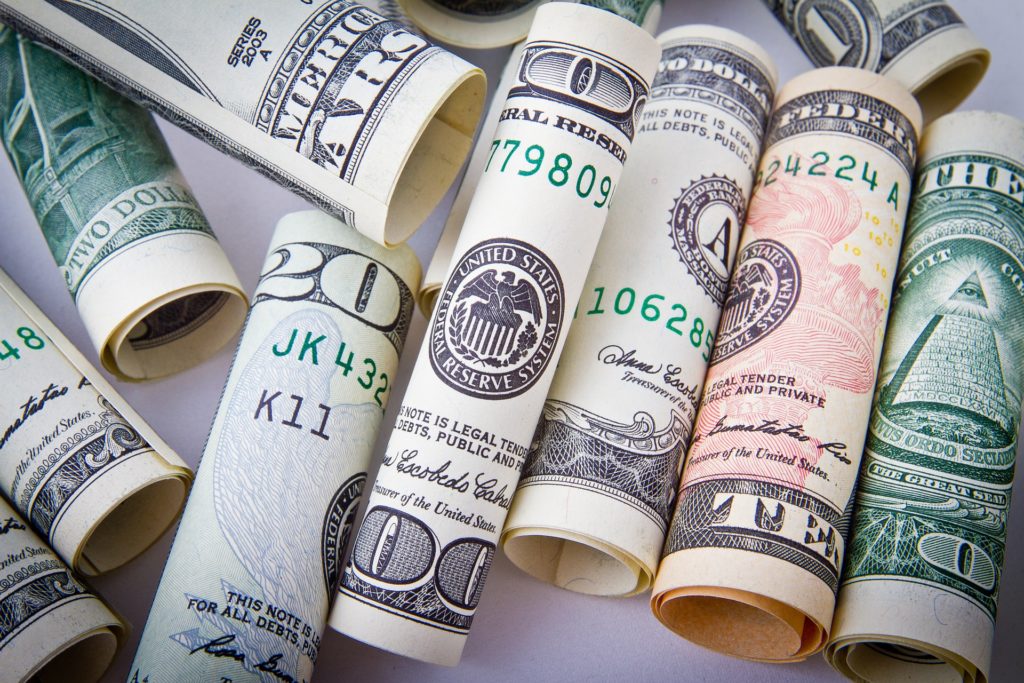
Getting Started
Setting Up Your Account & Making it Look Good
First things first, you will need a personal Facebook page in order to launch one for your board game or business persona. If you’ve got that, go to your Facebook home page, click the arrow in the top right, and click Create a Page. Click the Page type that best describes the Facebook page you’re creating, choose a category, and enter a page name.
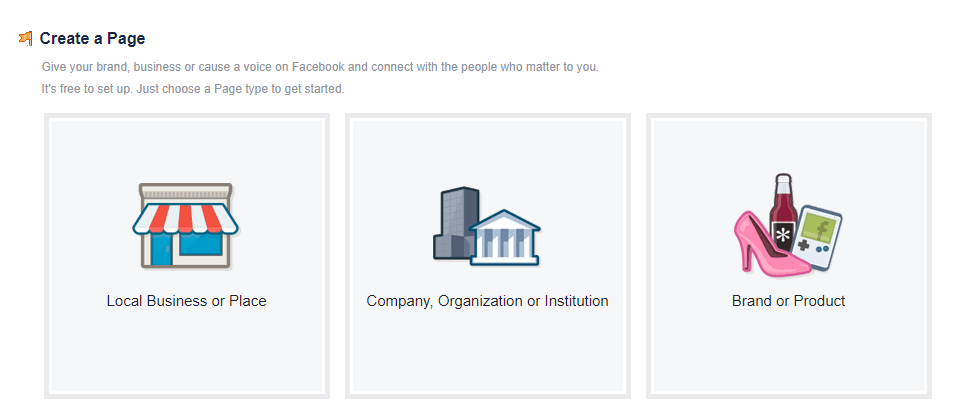
Upload a profile photo, which will display as a circular 170×170 photo. Then upload a cover photo that is 851×315. When you’re done with that, it will take you to your fresh Facebook page. Click Settings. Go through every single item and update all the settings as you like, with special attention paid to: Edit Page > Tabs and Payment. The former will control the layout of your Facebook page. The latter will determine how you pay for advertisements.
Once you’re done with all that, go back to your Facebook page and follow all the “Page Tips” in the top center of your Facebook feed. Facebook is really good about walking you through all the steps you need to take to get set up.
Making Early Content
Once your page layout and settings are set up the way you like them, I recommend backdating two weeks of posts. Be sure to consider your Content Mix when you are backdating posts and scheduling future ones. As a review, here is a quote about Content Mix from How to Get Big on Twitter as a Board Game Dev. Swap out “tweets” for “posts” and the same principle still applies.
The first is what I call Content Mix. This is comprised of three different forms of communication: sharing, talking, and self-promotion. Sharing involves retweeting others’ tweets when they speak to you, or alternatively, finding cool stuff online that’s worth bringing up in conversation. Talking is simply hanging out and passing time. Self-promotion is self-explanatory. However, relentless self-promotion will make you look dumb. Failure to self-promote at all will give you very few benefits because no one will know what you do. You have strike a balance.
I suggest taking a 5/3/2 approach. For every 10 tweets, 5 should be sharing others’ work, 3 should be conversational, and 2 should be self-promoting. Naturally, you’ll want to tweak this to what your audience responds to. As for what specifically to say and share, watch what other successful tweeters do. Copy the things they do that you like, but make sure you do so in your own words. As time passes, you will find your own voice.
Getting Noticed
Getting Page Likes Using Existing Resources
Being noticed on Facebook works differently than getting noticed Twitter or Instagram. On both of those social media sites, you have a good system for organic reach. That means you can reach out to people and make connections without spending money on ads. Facebook, on the other hand, has almost entirely eliminated organic reach.
That said, getting your first few page likes doesn’t have to be too tricky. The best thing you can do to get your first few page likes is to reach out to current Facebook friends. If you have a lot of Facebook friends on your personal Facebook account and you send out invites to most or all of them, you’ll pick up a handful of page likes that way. You can also use Twitter or Instagram to ask people to like your page, if you’ve got those set up already. Last but not least, if you’ve spent time building up a mailing list, you can always ask people to like your Facebook page in your next mailer.
Smart Advertising
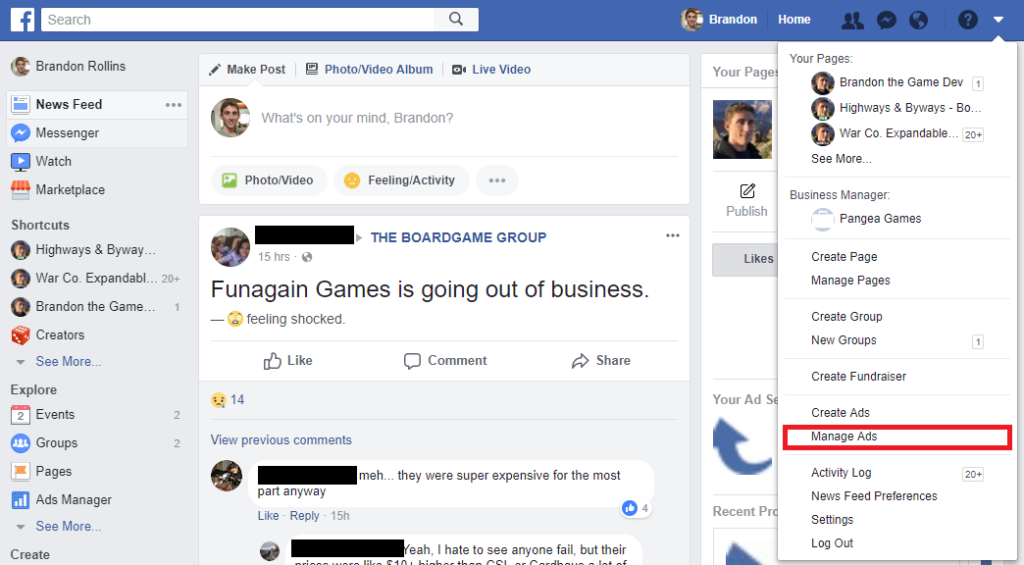
The best way to build up your Facebook page quickly, though, is through smart use of their advertising system. You can boost posts and perform some advertising functions from your Facebook page itself, but the best way to access their ad system is to click the top right arrow on your personal Facebook home page. Then click Manage Ads. Here is what my Ads Manger looks like.
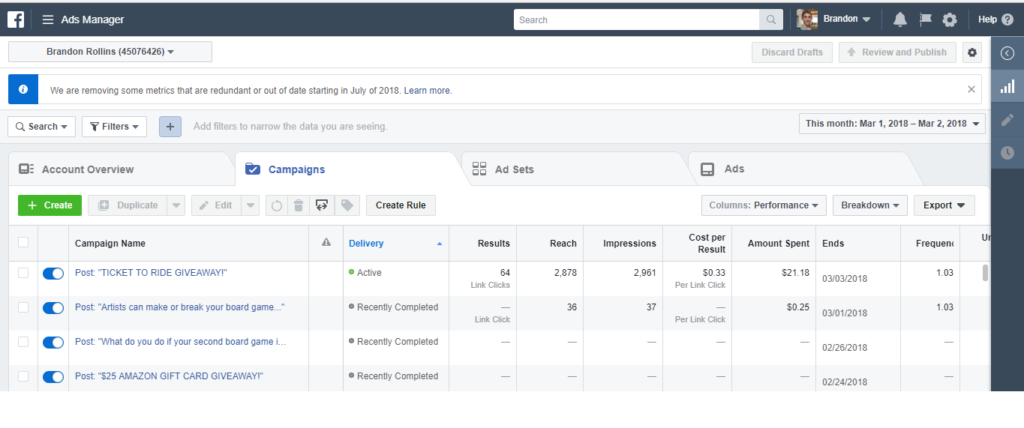
When you get to a screen like what you see above, click the Campaigns tab and then the Create button. You’ll be given a bunch of options for “What’s your marketing objective?” – the main ones being Traffic and Engagement. Traffic is ideal for getting people to click on links, such as blog posts or landing pages. Engagement is ideal for getting page likes or post comments/likes.
Of the two options, Traffic is better since you can actually use that to drive people to your landing pages. However, if you’re trying to build your Facebook page up quickly, you might like using Engagement to build up a few dozen or a few hundred page likes. This can get expensive quickly, and to be honest, I’m not convinced there is an ROI there.
Using a Traffic campaign as an example, here is what it’s like to set up an ad…
Choose where you want to drive your Traffic: I would recommend using your website.
Create an audience: This is the most important part. You can choose your audience by location, age, and other demographics, interests, and behaviors. You want to choose this very carefully and picked the narrowest audience you can so your ads are very well targeted.
For this website, to promote posts, I use locations of the US, UK, and Australia – all wealthy countries which speak English. I use ages 25-45 and market to men and women. Most importantly, though I make sure people like at least ONE of the following: BoardGameGeek, Geek & Sundry, Tabletop games, Tabletop Gaming News, or board games ALONG WITH Game Development or Game Design. That narrows down my audience to about 120,000 people and makes sure every dollar I spend is well-spent.
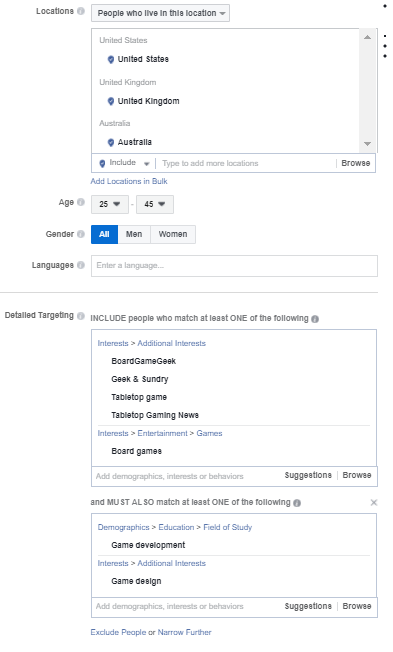
Choose your placements: You can choose where your ads will show up. That means different places on Facebook, such as the Feed, Instant Articles, In-Stream Videos, Right Column, Suggested Videos, and Marketplace. On Instagram, that means Feed and Stories. There are also options for Audience Network and Messenger, too, but I’ve never used those. When in doubt: use Facebook Feeds only – I’ve had good results with that.
Choose your budget and schedule: Start with one day and $5-10 until you know what you’re doing. You can always extend the end date and add to the budget later.
Pitfalls
By far the biggest thing you can do wrong on Facebook is to throw money away on bad advertising campaigns. You need to continuously monitor every Facebook campaign you run. If your ads don’t perform well, cut off the budget and try something else. Don’t pay more than $0.50 per page click or page like. If you have to pay more than that (at least within the board game industry), either your ad is unappealing or you haven’t defined your audience well enough.
Facebook will also constantly push you to boost posts for visibility. Don’t boost posts unless you have a very good reason. Good reasons to boost posts include links to your website, asking people to sign up for your mailing list, or giveaway contests. Otherwise, steer clear – it’s not the best use of your money.
You Must Experiment
Facebook rewards experimentation. I recommend that beginners play with the advertising system with $5 or $10 at a time until they get a feel for what works and what doesn’t. The ideal advertisement tomorrow will not be the same as the ideal advertisement today. Facebook isn’t interested in you using their ad system to its fullest potential. To them, a dollar is a dollar. The responsibility to learn falls squarely on your shoulders.
Refining Your Approach
Automating Your Posts: Ongoing
You can’t automate relationship building. You can’t automate making genuine, heartfelt connections with others. However, you can automate the posts which you broadcast to the whole world. I strongly suggest you use either Buffer or Facebook scheduler to prepare posts in advance. Every couple of weeks, you can come up with a bunch of posts, and pick the optimal time to post them. You don’t have to be tied to your phone.
You should still check Facebook on a regular basis. It’s still a good idea to converse with others. Automation will allow you to have some constant presence at all times, even when you’re at work, with your kids, or on vacation.
Refining Your Account: Ongoing
Automating posts will also free up time for you to start refining your posts. After a month or two of posting, you’ll be able to make good use of Facebook Insights – a robust data-gathering system that comes automatically with your Facebook page. Figure out what people retweet and like and post more of it. As you refine your approach, you’ll get followers more automatically and less manually.

Using Facebook for More than Just Posting
Groups
One very popular part of Facebook are Facebook groups. People join these groups and talk about their common interests. There are lots of groups for board games on Facebook and a lot of them can help you promote your business, if you’re careful and respectful. Groups have great engagement and they all have a unique culture.
You should be careful before you start your own, though. They can be tremendous for your business, but it’s tough to get one started on your own. On top of that, recent changes to Facebook’s notification algorithm may reduce the value of Facebook groups in the near future. Long story short, people will likely see fewer notifications from groups. Between us, I think this is a good thing because groups spam my personal Facebook notifications pretty hard.
Market Research
Facebook is also a really good way to keep on top of market trends. Though I rarely speak in them, I’m a fly on the wall in at least ten different Facebook groups. I pay attention to what people are saying in the groups. In addition to that, I run $5 and $10 ad experiments just to see what people are interested in.
Testing Ideas with the Ad System
Speaking of advertising research, if you’re looking to test the market for a new game and you haven’t committed to a theme or mechanics, here is an experiment you can run. Make advertisements for a few different game ideas you have. Set up landing pages for each one. Take out Facebook ads for each game idea directing to their corresponding landing pages. Put the same amount of money on each ad. See which one gets the most clicks. The idea that performs the best is one you should consider designing.
Making Connections
As with any social media site, it’s not just about pushing your business and selling things. You’ll also be meeting people and making friends. That can open tons of doors for you, so don’t just bury your head in advertisements and analytics. Meet some people!
Though intimidating and sometimes expensive, Facebook is an extremely valuable tool for a board game developer to use. If you take the time to work it into your marketing approach and commit to experimentation and improvement, you will definitely benefit from being on Facebook over time.
I know this is a lot of material to cover, so if you have any questions about setting up or managing a Facebook page, please ask below 🙂





5 thoughts on “How to Build up a Facebook Page as a Board Game Dev”
Thanks Brandon, this is very, very helpful stuff for someone beginning to get involved on FB as a developer or publisher.